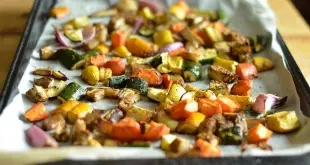So, of all the things on the nutrition label, protein is among the most straight-forward. Most of the significance of the protein count lies in how that number relates to other information on the food label. I should point out one thing though. Not all protein is created equal.
Folks ask me all the time about pork rinds, for instance. It says “not a significant source of protein” but then it lists a good deal of protein on the nutrition label. How can that be? Pork rinds = pork skin = fat = collagen protein = not well absorbed (by post-ops OR non-ops) = not a significant amount of protein. It’s sort of like Splenda and sugar. Even though sucralose is derived from sucrose, your body can’t absorb it so it doesn’t count as a sugar. Same deal. Even though pork rinds are made of something that has protein, it is ill absorbed and should not be considered a high protein source.
Ratios
So let’s talk relationships. No…not the relationship with your beloved. The relationship between protein and other nutrients.
Tell me if this has ever happened to you: You pick up a food, you like it, it seems to have a good protein count, you mention it to your nutritionist (or support group or online) and someone comes along and bursts your bubble. It’s not really a great food for you. But HOW??? It has the proteinz, right????
Well…the problem is the protein count alone, doesn’t paint a good picture. Here are a few basic “foodie-isms” to help:
- If a food is significantly higher in carbohydrates than protein, it should be considered a carby food with some protein in it
- If a food is significantly higher in fat than in protein, it should be considered a source of fat with some protein
What does this mean?
- Don’t eat peanut butter as a source of protein! It will always be a source of fat, first and foremost.
- Don’t drink milk thinking its primarily protein. It has 50% more carbs than protein and if you get the variety with some fat it may have more fat than protein
These are just a few examples. But, as Mr. Obama loves to say, let me be clear: I am not saying don’t eat those foods. I am saying don’t eat them as your sole source of protein. It is worth mentioning that if you’re going to eat a carb or a fat, it’s GOOD that it has some protein in it as well. Since we can’t take in much, we really need protein coming from all directions.
Protein and Calories
Like I said, protein is significant in relation to other factors, one of which being calories. Some folks, to keep themselves honest, assign ratios to how much protein should be in certain amounts of calories they eat. One popular one is the 10:1 ratio: for ever ten calories, one gram of protein. That’s a pretty good basic measure.
But keep in mind that protein has 4 calories. That means for every 10 calories there is the potential to be 2g of protein. If a food achieves that, it goes from being a good protein source to a really good protein source. So long as it doesn’t go bonkers with the fat and carbs.
Protein in Unexpected Places
Lastly, I want to talk about protein content in foods that aren’t inherently protein based. You’ll find them in stores and online. Protein chips, protein cookies, protein bread.
I always take pause on foods that have a lot of protein when they are not supposed to. This is, I know, a safeguard for our human tendency to overconsume the wrong things, especially simple carbs. But still. The laws of nature do apply here and so I would be remiss not to point out the following:
- Bread: the most common way to increase the protein is to increase the gluten (wheat protein) in it. More gluten = denser, chewier product. Me no likey personally. Your mileage may vary.
- Protein bars, although high in protein, may be higher in carbs and sugar alcohols. Be careful!
- Protein enhanced carbs and fat aren’t necessarily a bad thing, especially if you work out. Your body needs a combination of carbs, protein and fat to sustain you through exertion. Just choose wisely!
Tomorrow, we get to the final destination on the nutrition label: the nutrients! We’re almost there, people. Stick with me!
 Bariatric Foodie Play with your food
Bariatric Foodie Play with your food



I love your point about the collagen protein in pork rinds. This is the EXACT reason why those New Whey liquid protein shot drinks are garbage. Anyone who thinks they can get 42g of protein in a tiny 3gram container should think carefully. They list three different types of protein on their label, but the first listed is collagen protein. I have emailed them to find out how many grams of the 42 are collagen protein vs how much is whey isolate and whey concentrate.